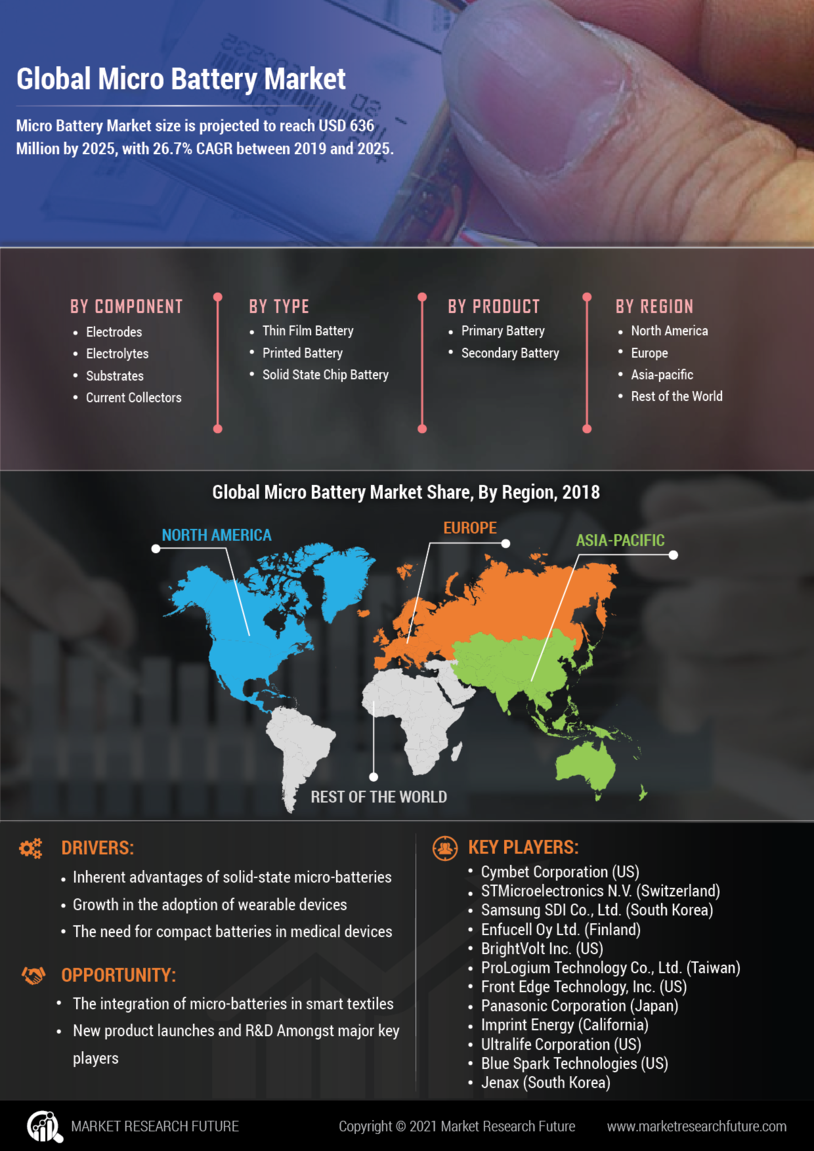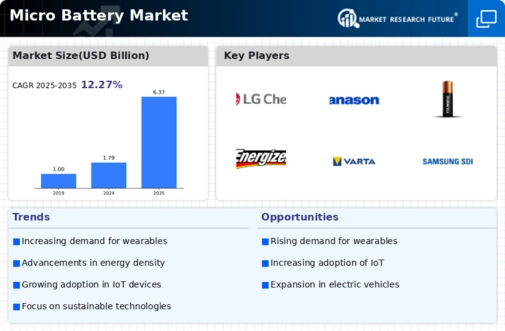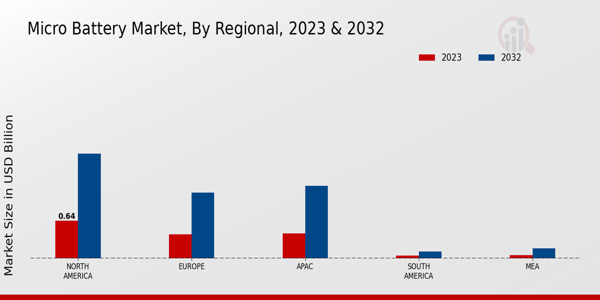Micro Battery Market Summary
As per Market Research Future Analysis, the Global Micro Battery Market was valued at 533.85 USD Billion in 2024 and is projected to grow from 533.85 USD Billion in 2024 to 2911.07 USD Billion by 2035, reflecting a CAGR of 16.67% from 2025 to 2035. The market is driven by the increasing demand for miniaturized energy sources in wearables, portable electronics, and medical devices, alongside advancements in technology and a shift towards compact batteries with high energy density.
Key Market Trends & Highlights
The micro battery market is witnessing significant growth due to various trends.
- Consumer Electronics segment is expected to grow from 0.64 USD Billion in 2023 to 1.81 USD Billion by 2032.
- Wearable Devices market value is projected to rise from 0.38 USD Billion in 2023 to 1.06 USD Billion by 2032.
- Medical Devices segment is anticipated to increase from 0.3 USD Billion in 2023 to 0.85 USD Billion by 2032.
- IoT segment is expected to grow from 0.15 USD Billion in 2023 to 0.42 USD Billion by 2032.
Market Size & Forecast
| 2024 Market Size | USD 533.85 Billion |
| 2035 Market Size | USD 2911.07 Billion |
| CAGR (2024-2035) | 16.67% |
Major Players
Key players include LG Chem, Panasonic, Duracell, Maxell Holdings, Nippon Kasei Chemical, Fujitsu, Energizer, Coulomb Technologies, Murata Manufacturing, Varta AG, Samsung SDI, Toshiba, Sion Power, and Sony.





















